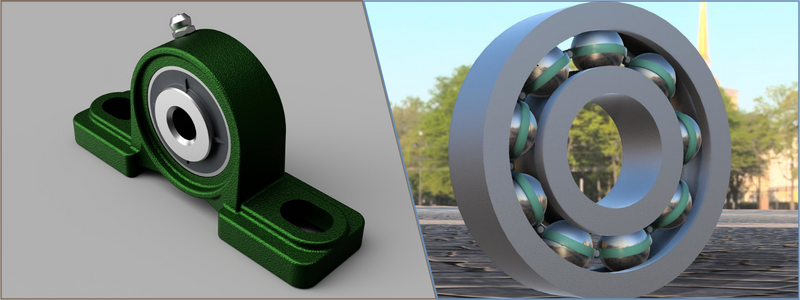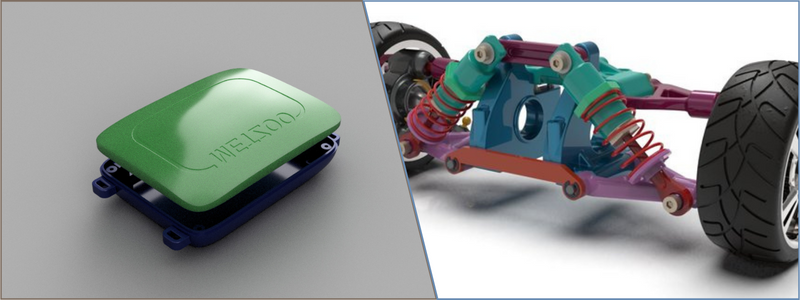This post discusses the seven reasons your company should create 3D printed prototypes. If you are looking for a better approach for all your prototype manufacturing needs, 3D printing is what you need. 3D Printing design services is one of the most state-of-the-art additive technologies in the market today that provides high accuracy levels when developing your product prototype to precision.
Traditional manufacturing is subtractive, and bits of material are removed from a big piece until you achieve the size and shape you are looking for, while 3D printing is an additive manufacturing process. The 3D printer adds material one layer after another to correspond to the design on the computer file. While it is often extremely time-consuming to go through the 3D printing process if you have more extensive production runs.
RELATED: Contract manufacturing services vs. manufacturing services
It offers incredible benefits to your business in terms of prototyping compared to injection molding and casting and CNC machining. By cutting back the time required for working through the design to testing and production, 3D printing services can help you save money. Listed below are some compelling reasons why 3D printing is your best option for your consumer product prototypes and why it is a good idea to incorporate it into your product creation process.
7 Reasons why your company should use 3D printed prototypes
1. 3D Printing prototypes is faster than other methods
3D printers gather design data from a CAD or computer-aided design model and use it as instructions for printing. A 3D printer needs very little when it comes to setup. It also doesn’t require any custom tools for your sample or prototype that would have otherwise been necessary if you used conventional subtractive processes. The entire printing process will probably be done and completed in just a matter of hours, depending size and complexity of the workpiece.
RELATED: Different kinds of prototypes and how to use them for your design project
There has been considerable growth in the range of materials that 3D product rendering companies use on 3D printers for the past few years. It allows designers to closely match the materials for the prototype to the material for the final product most of the time. When you test your prototype and discover that some adjustments must be made, you can quickly incorporate the changes to the design and print it again. The shortened process lets you move from the idea conceptualization to prototype and finally to testing to increase your speed to market.
3D printing is set apart from other methods by its ability to produce prototypes quickly from scratch, and it is what made 3D printing closely associated with rapid prototyping services. In the past, you had to wait for several days or even a few weeks before you could get your hands on your prototype, and 3D printing easily allows you to develop your prototype in just a matter of hours.
RELATED: A brief history of 3D printing
The only thing left is to develop your design as a CAD model, upload it to a 3D printer, and wait for your idea as it comes to life in the form of a prototype. It is excellent to produce some functional end parts in custom, low, or high volumes and save time. 3D printing allows you to manufacture and test any custom part in lesser time and modify it with no need to disrupt the speed of the entire manufacturing procedure. If your number one priority is speed, 3D printing is your best option.
2. Gives your company a competitive edge
3D printed prototypes are also perfect if you need a 3D printing designer to create real-world 3D mockups of your product idea and show them to your potential clients. With the help of the efficiency and speed of 3D printing, it is now possible for companies to cut the prototyping lifecycle short and present quality prototypes in less time to the clients and other stakeholders.
RELATED: 6 Ways you can use 3D printing services to create a new prototype design
When your clients get your product’s representation in the real world, it gives you a better idea of what you can offer them. Thanks to this, 3D printed prototypes do away with the risk of losing pertinent information or communication. Aside from this, you can also use these models as practical tools for marketing testing to get feedback from investors and customers. All of this combined gives you an edge over your market competition.

3. It helps with A/B testing
The main reason behind developing prototypes is to let you test several concepts and identify the right one that will meet all your expectations. It takes substantially more time to do this using traditional techniques for prototyping. From the actual creation of the prototype to polishing it, it takes significantly longer for conventional methods to A/B test the prototypes.
RELATED: How to make a prototype for your new product design
3D printing, on the other hand, allows you to test several prototypes within a short period quickly. All that the CAD drafting professional has to do is alter the necessary changes in the CAD file to create several variants of the original prototype of your product in quick succession.
4. It reduces material wastes
Sustainability is another compelling reason why 3D-printed prototypes are the best option for your company. Using subtractive methods leads to wasting lots of raw materials while carving out the prototypes from one block of material. Meanwhile, 3D printing is an additive technique that uses only the specific quantity of materials required to develop the prototype, and it eliminates material waste in the process. In addition, the materials used for 3D printing have less impact on the environment and are also recyclable.
RELATED: Advantages of using rapid prototyping services for your business
5. There are more options for materials to use
As far as manufacturing process engineering services go, 3D printer filament options have increased due to the rapid adoption and popularity of 3D printed prototypes. You can now choose any material, such as ABS, sandstone, wood, PETG thermoplastics, and amphora. Through these numerous options available, companies can experiment with various materials suitable for developing their prototypes, giving them more customizability and freedom with their prototyping process.
With 3D printing, you can work with an extensive array of materials and use clearcoat, paint, or even both to finish the printed prototype. It allows you to pick the finishes and materials closest to your expected end product, which is what an effective prototype should be. The following materials are the most common options available for 3D printing:
- PA 12
- PLA
- RIZIUM
- RIZIUM Carbon
- Tough PLA
Subtle design changes make it simple to test function versus form and understand the compromises you might make in the functionality and appearance between adjustments in the design.
RELATED: How to reduce painful product development costs for your company
6. It mitigates risk during manufacturing
3D printing allows individuals to develop and test prototypes for a lower cost, which mitigates a big chunk of the financial risk of launching a new product. You can change directions quickly, make some design alterations. The product prototype artist can develop a range of prototypes with slight differences, and proceed with a large production run once you have confirmed that your choices are the right ones. 3D printing makes the trial-and-error process more accessible than ever.
3D printing services can also provide affordable printed samples of proof of concept that you can present to your stakeholders. They will likely reach a decision immediately once they see and touch your product idea rather than simply hearing about it. Through 3D printing, companies can also consistently verify their product prototypes before the manufacturing company begins the manufacturing phase.
It also helps eliminate risks from the start and prevents devastating results. 3D printed prototypes make companies more aware of possible flaws the designs may have before they bring them to life, thus saving time and costs.
RELATED: Why is industrial design important for new product and prototype development?

7. It cuts down costs
For companies, the cost will always be a significant concern; it is where 3D printing shines the most during the prototype development stage. 3D printing lowers costs in almost everything, such as material, machine operations, or transportation costs. Since 3D printing doesn’t require much supervision for machine operations, it significantly reduces labor costs, unlike traditional machines. 3D printers also use less power than the usual heavy machinery, further curtailing the expenses to a great extent.
As for travel costs, with manufacturing 3D printing services you can simplify the prototype production from beginning to end in just a single location. Therefore there is no need to move them around several sites. It helps reduce shipping costs significantly. While prototyping costs can add up for various reasons, the biggest is labor. 3D printing usually requires just one technician to turn the machine on and load the design.
RELATED: Top tips to create impactful prototype designs for company products
It provides substantial savings compared to injection molding or machining, which need expensive tools and significant setup. Interlocking features and complex geometries are usually costly and challenging, using traditional processes for manufacturing. 3D printing services can make achieving these designs simple, encouraging greater design possibility and innovation.
The bottom line
3D printing is undoubtedly the most cost-effective and popular approach to prototyping. With its different benefits in terms of reliability, speed, and cost, it is a helpful method that can turn your products into reality. Ready for a quote? Get started right away, and Cad Crowd will connect you with a cutting-edge 3D printing company that will bring your design to life.
